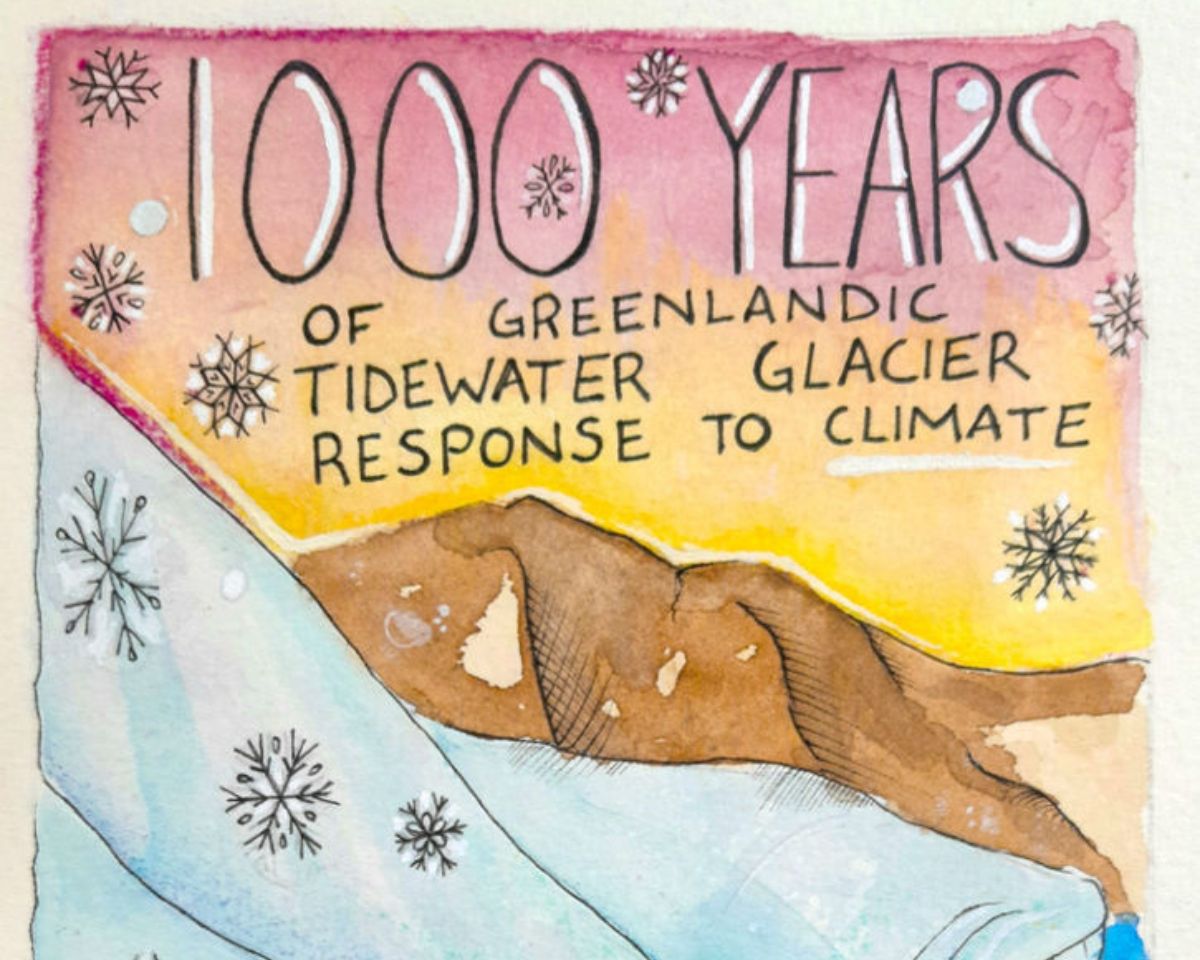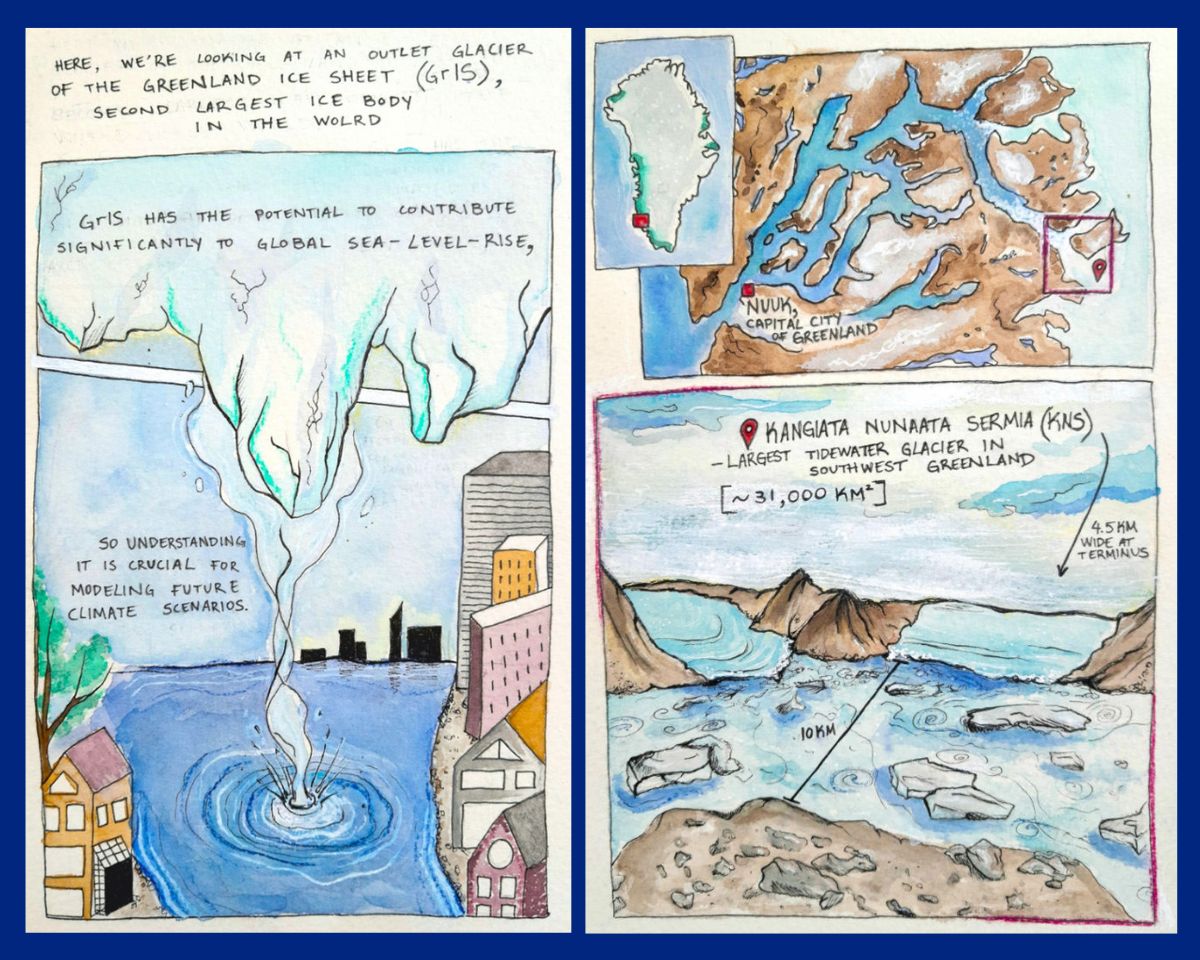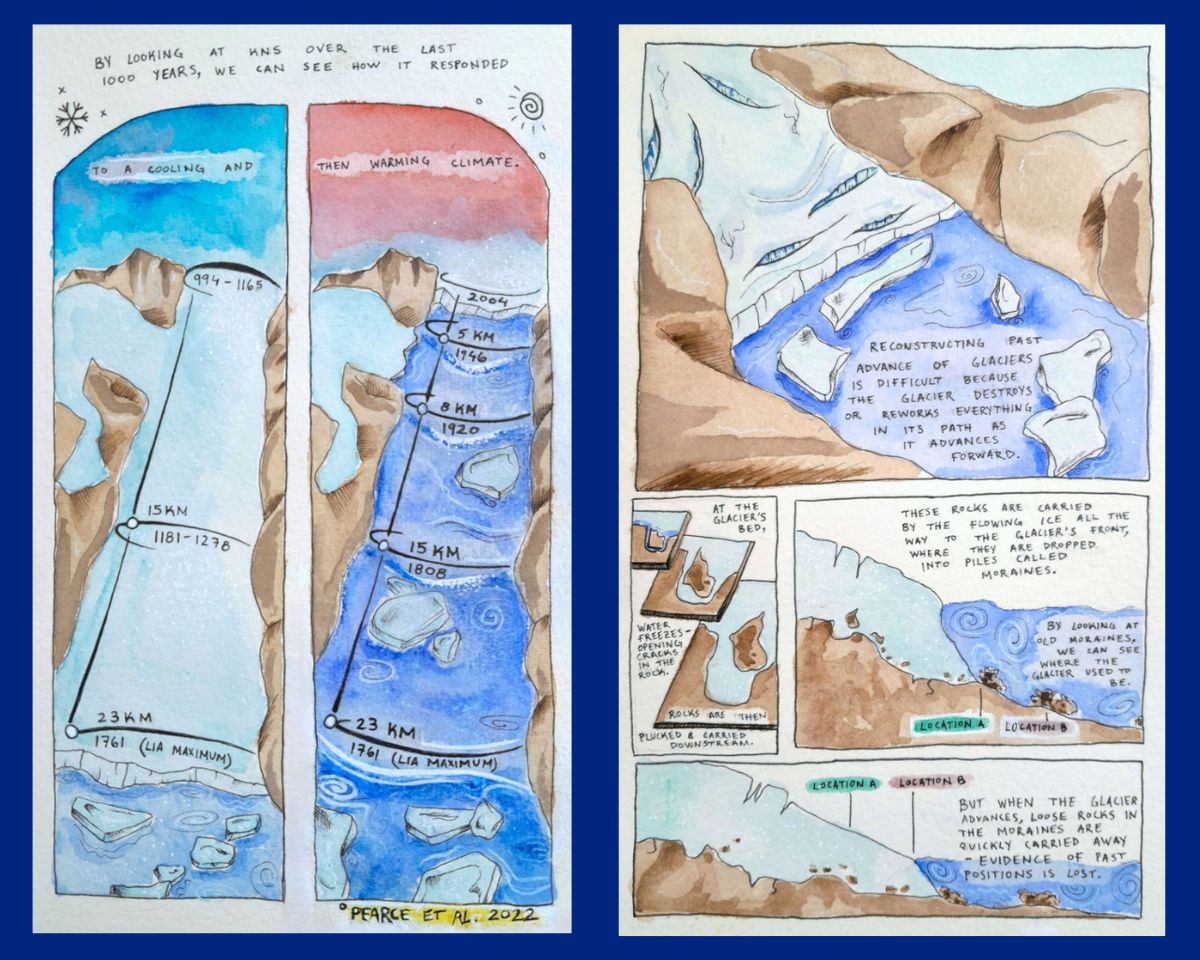By transforming complex math equations into compelling watercolor paintings, researcher Domino Jones hopes to engage the Greenlandic public.
By Nicoline Larsen
Published on July 22, 2024
Meet Domino Jones. They are a Ph.D. student at the University of Liverpool, modeling a Greenlandic tidewater glacier’s response to long-term climate change.
That description might not immediately make you think of watercolor paintings, but armed with paper and brush, Domino Jones is exploring new ways to engage people in science.
“I believe communicating visually is a powerful way of inviting people in. It helps us encourage curiosity, which, after all, is at the heart of science,” says Domino Jones, who drew and wrote an illustrated abstract of their PhD-project.
Math is great, but…
Domino Jones studies Kangiata Nunaata Sermia, the largest glacier in Southwest Greenland. They examine the glacier’s development over the past 1,000 years, and by looking at how the glacier has responded to changing climates over time, they hope to understand how the glacier might react to future climate changes.
Although the object of Jones’s research is quite tangible, most of Domino Jones’ research takes place in front of a computer screen.
“By the nature of a computer-based PhD, I sometimes feel very distant from my subject. I read a lot of equations and think about numbers all day. I found myself not even looking at images of glaciers and only focusing on the math. Don’t get me wrong, math is great! But I’m doing this PhD because I love glaciers. So, I started doing illustrations to stay connected with my subject.”
The illustrations have given the researcher new perspective on their own work, in addition to helping others learn about the project.
“I love sharing the illustrations and helping people learn more about Arctic research. I often draw at a public library or in the park near my home. People come up and ask what I’m drawing, which always leads to a conversation about glaciology. I find this very rewarding.”
Here you can see Domino Jones’ illustrated abstract of their PhD project. The interview continues after the illustrations…





